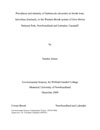
Community - University Research for Recovery Alliance

Institute for Biodiversity Ecosystem Science and Sustainability

Parks Canada
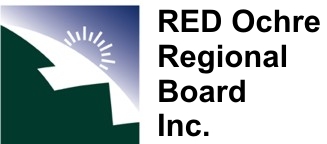
Red Ochre Regional Board
![]()
Department of
Fisheries and Oceans
Critical Habitat
Salmonid Fishes (Brook Trout and Salmon) 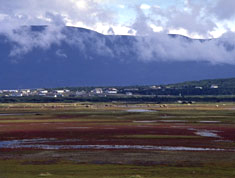
Even though brackish ponds and protected fjords likely serve as both important transition areas and long-term rearing habitats as these fish migrate between freshwater and ocean environments, use of these habitats by charr species was poorly understood. Recent research also suggested that bio-complexity (in life histories, behaviour and habitat use) can be important in maintaining aggregate population strength of salmonids, including resilience to future impacts such as climate change. The population structure across such features as brackish ponds and marine and freshwater fjords might influence the overall sustainability of the species.
Our project had three components: two biological, and one using survey data. We tagged brook trout coming out of Deer Arm Brook with tracking devices and set up a series of receivers in Eastern Arm to see where fish go when they are at sea and the timing of their migrations. We also analyzed the chemistry of fish ear bones. Fish ear bones grow like tree rings, with chemical signals deposited based on the water environment they are in. Analyzing these bones allowed us to determine when fish were in saltwater to show how often trout got to sea in their lives and at what age. Finally we surveyed fishermen either while they were fishing or by telephone. The fishermen were asked questions on the fishery timing, catch history and management.
Some of our biological results indicated:
- Size of fish has no effect on distance, speed, or duration of migration. Fish mostly travel back and forth from the brook to the estuary. Fish spend on average 37 days at sea.
- There was no set age for fish to go to sea but the majority of fish go to sea for the first time at age 2. We did not see any set pattern for number of migrations a fish makes during its lifetime.
Some of the responses to the surveys indicated:
- the summer brook trout fishery is between May and August
- the majority of brook trout fisherman in Gros Morne National Park live within the park and keep the fish they catch
- over the past 10 years, fisherman have reported no difference in the size of fish, but did report a difference in the number of fish they catch
- the majority of fisherman believe that the bag limit and seasonal closure on the brook trout fishery is appropriate and important to fishery health
- the majority of fishermen suggested increased enforcement for the trout fishery in GNMP
Preliminary results were presented during a community meeting at the Bonne Bay Marine Station in the fall of 2010.
Researchers and Partners
Lead Researchers:
Ian
Fleming
Student:
Michelle Caputo, M.Sc. Biology
Lead Community Partners:
Rob
Otto, Institute for Biodiversity, Ecosystem Science and Sustainability
(IBES)
Tom
Knight, Parks Canada
Other Partners:
Red Ochre
Regional Board
Department
of Fisheries and Oceans, Corner Brook
Materials
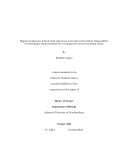
Migratory behaviour of brook charr (Salvelinus fontinalis) in Gros Morne National Park, Newfoundland and the potential for co-management of the recreational fishery
Michelle Caputo (2013). M.Sc. thesis, Biology Department, Memorial University of Newfoundland.
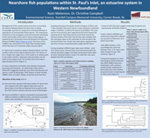
Nearshore fish populations within St. Paul's Inlet, an estuarine system in Western Newfoundland
March 11-13, 2011A poster by Ryan Melanson and Dr. Christine Campbell, Department of Environmental Science, Grenfell Campus of Memorial University of Newfoundland. Presented at APICS 2011, Joint Aquaculture and Fisheries, Biology and Environmental Studies Conference.
 |

|
 Marine Station
Marine Station